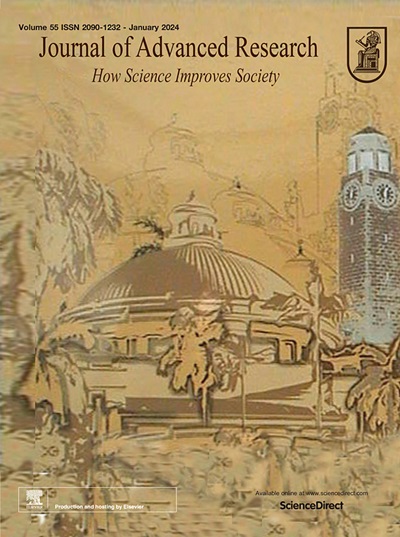New insights into the enteric methane production based on the archaeal genome map of ruminant gastrointestinal tract
IF 11.4
1区 综合性期刊
Q1 MULTIDISCIPLINARY SCIENCES
引用次数: 0
Abstract
Introduction
As one of the important components of ruminant gastrointestinal tract (GIT) microbiome, archaea are involved in many biological processes, especially methanogenesis. However, the diversity and individual metabolic characteristics of archaea in this habitat remain largely understudied, partly due to the lack of a unified reference genome catalog.Objectives
This study aimed to construct a unified genome map for taxonomic and functional exploration of ruminant GIT archaea in the future.Methods
We collected archaeal genomes from public sources and new data of this study. We performed phylogenetic analysis, functional genomics analyses, prophages identification based on the genomes. Using collected genomes as a reference, we conducted metagenomic and metatranscriptomic analyses on rumen fluid samples from 18 dairy cows with different methane (CH4) production.Results
We constructed the ruminant GIT archaeal genomes (RGAG) by compiling 405 strain-level (160 species) non-redundant archaeal genomes from more than 10 ruminant species. The functional heterogeneity and methanogenic structure within RGAG was investigated. RGAG possessed 1,124 (99.5 %) unknown microbial biosynthetic gene clusters. A survey of RGAG-borne prophages identified 63 prophages with 122 host-beneficial genes and 18 auxiliary metabolic genes (AMGs). The pipeline for both metagenomics and metatranscriptomics generated in the study revealed the roles of archaeal genomes under-assessed in general analyses of muti-omics. The highly expressed genus Methanosphaera was negatively correlated with CH4 production.Conclusion
A unified genome map of ruminant GIT archaea is constructed in the study. Functional genomics indicates that the multifaceted functions of RGAG remains undiscovered. Multi-omics analyses reveals the advantages of metatranscriptomics over metagenomics in studying rumen archaeal communities. Differences in rumen archaeal community structure among cattle with different CH4 production may reflect the balance between rumen hydrogen production and methanogenesis. Our work provides new understanding of archaeal functions in the ruminant GIT and potential targets for future CH4 reduction.

基于反刍动物胃肠道弓形虫基因组图谱的肠道甲烷生产新见解
引言 作为反刍动物胃肠道(GIT)微生物群的重要组成部分之一,古细菌参与了许多生物过程,尤其是甲烷的生成。本研究旨在构建一个统一的基因组图谱,以便将来对反刍动物胃肠道古细菌进行分类和功能探索。方法我们收集了公共来源的古细菌基因组和本研究的新数据。我们根据基因组进行了系统进化分析、功能基因组学分析和噬菌体鉴定。以收集到的基因组为参考,我们对18头不同甲烷(CH4)产量的奶牛的瘤胃液样本进行了元基因组学和元转录组学分析。结果我们从10多个反刍动物物种中汇编了405个菌株级(160种)的非冗余古细菌基因组,构建了反刍动物胃肠道古细菌基因组(RGAG)。研究了 RGAG 内部的功能异质性和产甲烷结构。RGAG 拥有 1,124 个(99.5 %)未知微生物生物合成基因簇。通过对 RGAG 中的噬菌体进行调查,发现了 63 个噬菌体,其中有 122 个对宿主有益的基因和 18 个辅助代谢基因(AMGs)。研究中生成的元基因组学和元转录组学管道揭示了在突变组学的一般分析中未被充分评估的古菌基因组的作用。结论 该研究构建了反刍动物胃肠道古细菌的统一基因组图谱。功能基因组学表明,RGAG 的多方面功能仍未被发现。多组学分析表明,在研究瘤胃古细菌群落时,元转录组学比元基因组学更具优势。不同CH4产量的牛的瘤胃古菌群落结构差异可能反映了瘤胃产氢和产甲烷之间的平衡。我们的工作为反刍动物胃肠道中的古细菌功能以及未来减少甲烷排放量的潜在目标提供了新的认识。
本文章由计算机程序翻译,如有差异,请以英文原文为准。
求助全文
约1分钟内获得全文
求助全文
来源期刊

Journal of Advanced Research
Multidisciplinary-Multidisciplinary
CiteScore
21.60
自引率
0.90%
发文量
280
审稿时长
12 weeks
期刊介绍:
Journal of Advanced Research (J. Adv. Res.) is an applied/natural sciences, peer-reviewed journal that focuses on interdisciplinary research. The journal aims to contribute to applied research and knowledge worldwide through the publication of original and high-quality research articles in the fields of Medicine, Pharmaceutical Sciences, Dentistry, Physical Therapy, Veterinary Medicine, and Basic and Biological Sciences.
The following abstracting and indexing services cover the Journal of Advanced Research: PubMed/Medline, Essential Science Indicators, Web of Science, Scopus, PubMed Central, PubMed, Science Citation Index Expanded, Directory of Open Access Journals (DOAJ), and INSPEC.
 求助内容:
求助内容: 应助结果提醒方式:
应助结果提醒方式:


